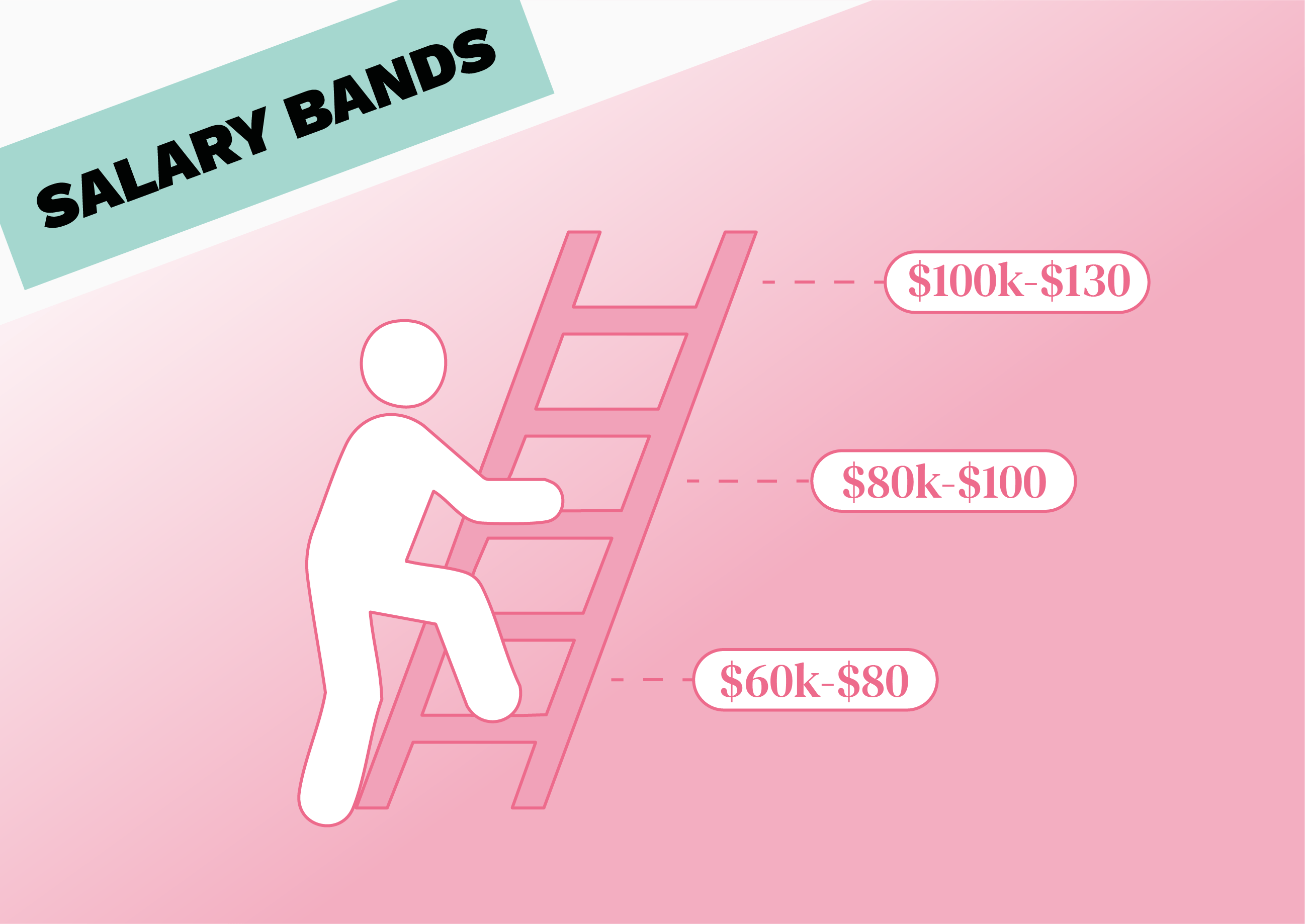Common mistakes when building salary bands
Salary bands, pay bands, salary banding… regardless of what terminology you use, you know about them.
Maybe you have them already and are looking to manage your compensation more efficiently?
OR maybe you’re curious about this buzzword and want to begin to create your own?
Whatever stage you’re at, this overview covers the biggest mistakes that HR teams (like you) can avoid to get the maximum benefits from salary bands.
Ready? Let’s go -
#1 Lack of data analysis and benchmarking
One of the most common mistakes when building salary bands is failing to conduct thorough data analysis and benchmarking. Without accurate and comprehensive market data, organizations risk setting salary ranges that are either too low or too high compared to industry standards.
How to avoid this mistake?
Gather reliable compensation data from reputable sources and check for changes (we recommend at least 1-2 times a year to stay aligned). Pay attention to industry benchmarks and market trends to ensure your salary bands are aligned with the current market conditions. By utilizing data-driven insights, you can establish competitive compensation structures that attract and retain top talent.
Here are our best tips on how to decide on what data to use for your compensation benchmarking
#2 Inadequate job evaluation and classification
Poor job analysis and evaluation processes can lead to inconsistent job classification and leveling within salary bands. This mistake often arises from a lack of standardized evaluation methodologies or insufficient attention to detail when assessing job roles.
How to avoid this mistake?
To overcome this challenge, invest time in conducting job levelling. Clearly define job roles, responsibilities, and required skills, and establish consistent evaluation criteria for each position. Implement a systematic approach to job classification and leveling, ensuring that similar roles are appropriately placed within the salary bands. Consistency in job evaluation will enhance fairness and transparency within the organization.
Not sure where to start? Try using the free Figures Levelling Framework HERE
Sophie Aspden, People Manager at Planes Agency shares that when it comes to levelling & staying competitive, Figures is her go-to:
“When thinking about new roles, we can see where the new roles should lie using market data and our bandings, which helps us to stay competitive and pay at the right level. It’s definitely saved time for me.”
#3 Overlooking internal pay equity
Ignoring internal pay equity can cause significant discontent among employees and harm the overall morale within the organization. Failure to address pay disparities and inconsistencies based on factors such as experience and performance can lead to increased turnover and decreased employee satisfaction.
How to avoid this mistake?
Regularly review your organization's pay structure and identify any disparities or inconsistencies. Consider implementing transparent pay scales based on factors like experience, qualifications, and performance. By incorporating internal pay equity, you demonstrate a commitment to fairness and provide employees with a sense of value and recognition.
Especially with the upcoming EU Pay Transparency Directive & reporting pay equity will be more important than ever before for your organization
#4 Failure to consider future growth and scalability
Salary bands that lack flexibility and fail to account for career progression and market changes can stifle employee growth and hinder organizational development. Inflexible salary structures may result in limited opportunities for advancement, causing dissatisfaction and potentially leading talented individuals to seek opportunities elsewhere.
How to avoid this mistake?
Design salary bands that are scalable and adaptable. Anticipate future growth and changes in the market by regularly reviewing and updating your salary bands. Ensure that career progression is taken into account, providing employees with clear pathways for advancement within the organization. By embracing flexibility, you create an environment that fosters growth and rewards employee achievements.
Here’s how you can determine your salary band width
#5 Lack of transparency and communication
Insufficient communication about the rationale and structure of salary bands can create confusion and mistrust among employees. When employees lack understanding about how salary bands are determined, they may feel undervalued or question the fairness of the compensation system.
How to avoid this mistake?
There are two parts here all around the topic of prioritizing transparent communication.
Clearly communicate the rationale behind the salary bands, explaining the factors considered and the methodology used. Foster an environment where employees can provide feedback and address concerns. By involving employees in the process and keeping them informed, you build trust and ensure that everyone understands how their compensation is determined.
And an extremely important factor of the success of your salary bands launch is also training yourteam managers so they are empowered to run constructive compensation conversations with their teams.
Conclusion & further reading
Now that you know where to take action,
Click to learn more about the best tool to build, update and share salary bands!
Not enough salary band content? We got you...
.avif)




